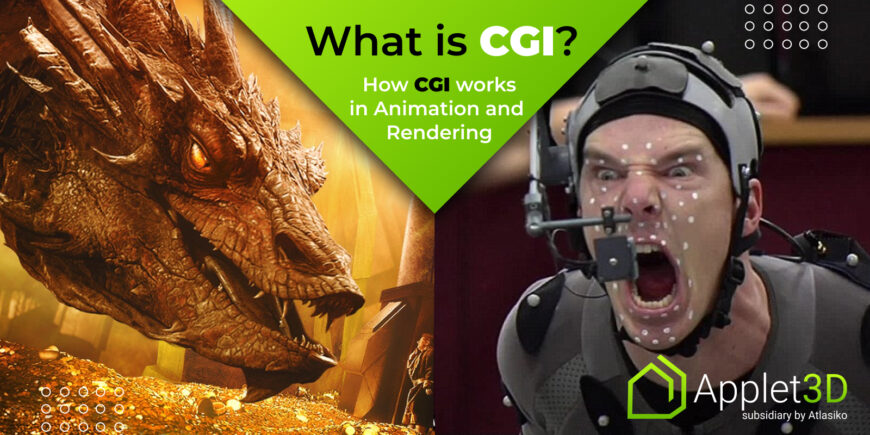- What does CGI mean?
- What are CGI characteristics?
- How does CGI work?
- The history of CGI: when was CGI first used?
- The future of CGI
- Where is CGI used?
- Who is involved in CGI creation?
- What is CGI animation?
- How to create CGI?
- How to make CGI animation?
- Creating CGI elements in the film industry
- What is the best CGI software?
- What programs are used to create special effects?
- CGI Examples
- Mistakes in CGI creation
- CGI vs Animation
- Conclusion
Living in a time of super-technology, it is impossible not to be interested in computer graphics or not to hear about it. Thanks to CGI development, special effects in the film industry have acquired a new meaning. With CGI technology, it is possible to create stunning visuals, realistic and otherworldly scenes, and make virtual environments and characters. In addition, CGI has also gained popularity in other industries, such as TV, marketing, computer games, and production.
In one way or another, Computer-Generated Imagery (CGI) is an essential tool for many industry creators. But what is the meaning of CGI and how does it work? In this article, we will look at these questions in-depth and figure out how it is used in our daily lives. From its origins to its modern applications, we will explore the fascinating world of CGI and how its potential is only just beginning to be realized. Let’s dive in!
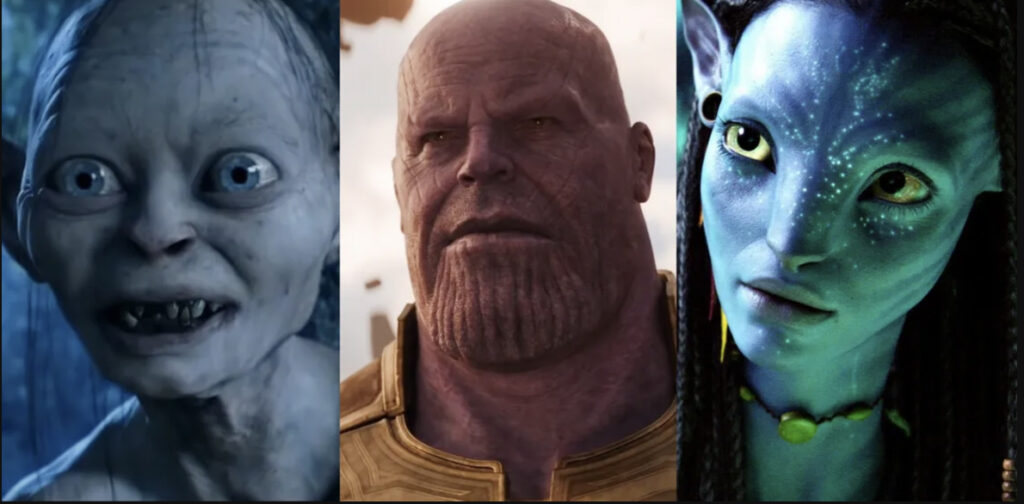
What does CGI mean?
Let’s start our journey through the fascinating virtual world by finding out what CGI means. CGI (stands for Computer-Generated Imagery) is a versatile computer graphics technology used to create still or animated visual content in various arts, media, and industries. This technology involves the creation of a 3D model or digital representation of an object, environment, or character, which is then rendered or animated using specialized software to produce the final image or video. CGI is also often called 3D rendering or 3D imaging.
It is essential, that CGI allows you to create both static and dynamic images that simulate reality in a virtual environment. It is a complex process that requires a set of sophisticated techniques to create realistic models with different light sources, reflective surfaces, particle effects, and realistic physics.
The term Computer-Generated Imagery is more commonly associated with three-dimensional computer graphics used in films, video games, and television shows to create a variety of scenes, characters, backgrounds, and special effects. However, CGI technology is also used in architecture, advertising, news, engineering, augmented reality applications, virtual reality, and art. CGI can also result in 2D effects.
Computer-Generated Imagery has gained particular importance for creators of large-scale projects, as this technology has made it possible to create complex and intricate visuals that would otherwise be difficult or impossible to achieve through traditional means. The technology behind CGI is constantly evolving, with new methods and algorithms being developed to get incredibly realistic results and reproduce complex special effects.
What are CGI characteristics?
Computer-Generated Imagery (CGI) is a versatile tool that can be used to create both 2D and 3D images, including text, objects, shapes, backgrounds, and environments. In some cases, CGI can even be used to create combined images and videos that can deceive the eye into believing in the illusion presented.
However, when done poorly, CGI can create fake shapes, visualizations, objects, and environments that stand out unnaturally from the background or look artificial.
In addition to realism, other characteristics of CGI include the following:
- Flexibility: CGI graphics offers a high degree of flexibility in terms of design and execution, allowing artists and designers to create almost any visual element they can imagine.
- Time and Cost Efficiency: While the creation of high-quality CGI renders can be time-consuming and expensive, once the initial investment is made, it can be much faster and more cost-effective to create new visuals or make changes to existing ones than traditional methods.
- Integration: CGI can be easily integrated with other technologies, such as motion capture, 3D scanning, and virtual reality, to create even more realistic and immersive visuals.
- Accessibility: With advances in technology, CGI software and tools have become more accessible to a wider range of users, from professional artists and designers to hobbyists and enthusiasts.
How does CGI work?
Computer-Generated Imagery is done in a variety of ways. For example, using algorithms to generate fractals can create complex visual patterns. Other techniques include drawing in a 2D pixelated image editor and creating shapes for images, just like in a vector image editor.
CG imagery can also be generated from 3D graphics using ray tracing or bitmap 3D graphics. Complex visual effects can be created by compositing – combining CG images into the film in layers. This technique is often used in conjunction with a green screen to position actors against a simulated background.
Now, that we know what CGI’s definition and meaning are, let’s find out its history and applications in different fields. Of course, CGI is most commonly associated with the film industry. From intimate dramas to sci-fi epics or blockbusters, CGI has been used in thousands of cinematic masterpieces. We will talk about it further.

The history of CGI: when was CGI first used?
The history of CGI dates back to the early 1960s when computer graphics were first used to create simple images and animations. And although CGI was only used in movies and television in the 1970s and 1980s, the first movie to be made using CGI technology is considered to be Vertigo (1958) by Alfred Hitchcock. The film shows a series of spirals that appear and dissolve and cause a nauseating feeling of dizziness. The film creators combined the spinning of the M5 filmmaker used during World War II with a pendulum that held a paint tank with a handle attached. Thus, spiral patterns were created.
The next step in the development of CGI was made in 1961 by scientist Ivan Sutherland. He made the Sketchpad system, where users could create drawings directly on the monitor screen, using a light pen.
In 1973, the Department of Computer Science at the University of Utah developed a software system called “Utah Teapot” that allowed for the creation of three-dimensional graphics. This was a significant breakthrough as it allowed users to create complex 3D models and manipulate them in real time.
In the 1970s and early 1980s, CGI began to be used in films, primarily for special effects. One of the first examples was Westworld 1973 (the first 2D CGI scene) and Tron 1982, which applied Computer-Generated Imagery to create the film’s distinctive look and feel. At the same time, the world saw such films saturated with 3D computer graphics elements as The World of Tomorrow, Star Wars, and Alien.
The green screen, which is one of the main tools related to computer editing, has also been used for quite some time. For example, for the filming of Bond movies, Mary Poppins’ interaction with animals, or the original King Kong. The beginning of green screen history is the use of multi-exposure in photography, i.e. the use of two or more photos on one frame of film. In analog photography, to get such a shot, you just need to press the shutter release without moving the film.
The future of CGI
We can talk again and again about the important place of CGI in the modern world and the rapidly growing demand for this technology in various industries. We conducted in-depth research, talked to industry experts, and found out what the future might hold for Computer-generated imagery.
CGI is poised for continued growth and development in the coming years, driven by technological advancements, increased demand in various industries, and the emergence of new applications.

According to the data of VerifiedMarketResearch, the Computer Graphics Market size was valued at USD 29.4 Billion in 2021 and is projected to reach USD 45.2 Billion by 2030, growing at a CAGR of 5.5% from 2022 to 2030.
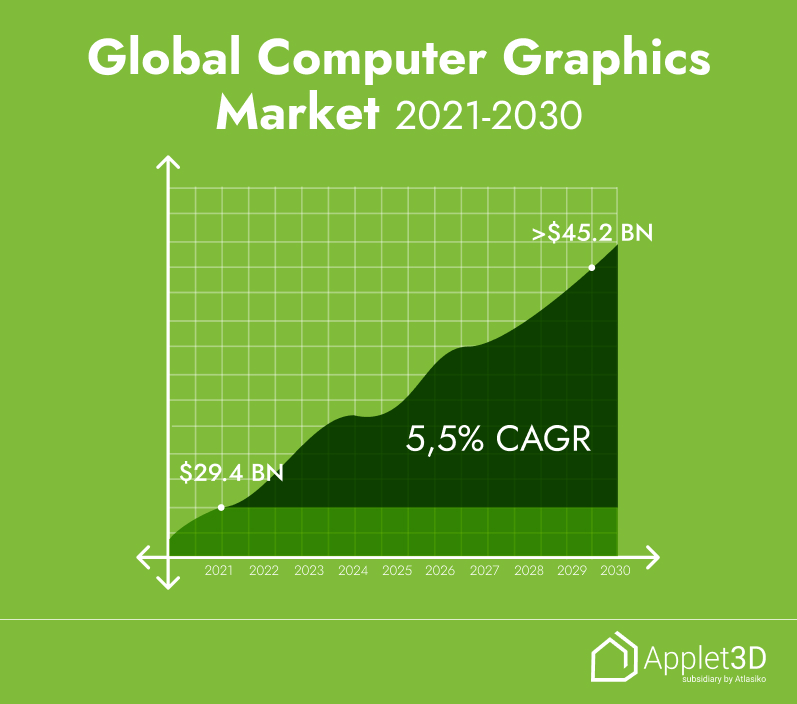
Where is CGI used?
Want to learn more about what CGI technology is? Then let’s go a little bit deeper and find out some of the most common uses of CGI.
In addition to the film industry, computer-generated effects are commonly used in commercials, TV programs, and other media. Visual effects made with this technology often have higher quality and are more controllable than other, more physical processes. For example, hiring extras for crowd scenes or creating thumbnails for effect shots. In addition, CGI rendering allows you to produce images that cannot be realized with other technologies. It could also allow an artist to create content without the use of actors, props, or expensive sets.
Architects, engineers, and real estate agents use 3D CGI to create realistic visualizations of buildings, landscapes, and other structures before they are built. This allows them to explore design options and communicate ideas to clients more effectively. CGI render helps a potential investor or buyer to understand every detail of the property, and all aspects of the project, from the general layout to individual objects.
Many video games rely on CGI to create immersive, interactive environments that respond to player actions. Computer-Generated Imagery allows the creation of realistic character animations, special effects, and other visual elements.
As elsewhere, CGI in advertising is used for two purposes: to make the image beautiful and to show everything you need in the best possible way. First and foremost, CGI in advertising is focused on creating photorealistic images of products, such as cars, phones, or clothes. In addition, entire scenarios are created for impressive advertisements that resemble short action movies or historical dramas. Explosions, falling buildings, and even the advertising objects themselves are drawn with the help of CGI rendering. In fact, all the beautiful pictures around us are the result of computer-generated graphics (in its pure form or combined with other techniques for creating visual effects).
Nowadays, CGI is also actively used in medicine. The technology allows the creation of realistic 3D models of human anatomy based on medical imaging data, such as CT, MRI, or ultrasound. These models can be used to study the structure and function of various organs and tissues, as well as to plan and perform surgical operations.
An important step in product development is to create photorealistic 3D renderings that showcase the final result. CGI can help designers and engineers visualize and test different design options before the product is physically created. Designers and developers also use CGI for product presentations, from early planning to marketing. You can make the product attractive, add the right lighting and shadows, and tweak the composition. This method will help in the best way to present your project to customers and investors even before it is developed.
Who is involved in CGI creation?
Have you ever thought about, how these fantastic visualizations in movies or ads are created? Why are they so realistic that they can deceive the eye into believing what we see on the screen?
It’s important to remember that CGI combines digital art and complex technological techniques that require entire teams to execute. In the film industry, CGI is an important part of the visual effects department (VFX).
The use of CGI ranges from subtle work on characters and environments to animating entire locations. All this requires a lot of effort and high professionalism. It is not surprising that large-scale film projects – mostly fantasy films – take so much time and are released years after the announcement.
There are several key roles and departments involved in CGI creation, which can vary depending on the specific project or industry. Here are some of the most common:
Art Director: responsible for the overall artistic direction of the project, including the visual style, color palette, and mood.
3D Modeler: creates 3D models of characters, objects, or environments using software like Maya or ZBrush.
Texture Artist: creates surface textures for 3D models, including color, reflectivity, and bump maps.
Animator: brings 3D models to life through movement and expression, often using motion-capture data as a starting point.
Lighting Artist: sets up lighting and shading for 3D scenes, creating realistic or stylized looks through the manipulation of light sources.
Visual Effects Supervisor: oversees the creation of all visual effects in a project, ensuring they meet the director’s vision and standards.
Compositor: combines multiple layers of footage, including live-action and CGI elements, to create the final image.
In addition to these key roles, several departments may be involved in CGI production:
Previsualization department: creates a rough 3D version of the project to help the director plan shots and make creative decisions.
Rigging department: creates a skeleton or “rig” for 3D models, allowing them to be animated.
Rendering department: uses high-performance computers to convert 3D data into a final image or animation.
Pipeline department: manages the flow of data and assets between different departments, ensuring that everything is on schedule and budget.
Overall, the creation of Computer-Generated Imagery involves a highly collaborative process between many different professionals with specialized skills and expertise.
What is CGI animation?
CGI animation is a type of animation that involves the use of computer software to create animated images. This technology allows directors and animators to create 3D worlds and characters that can move and interact with each other in a very realistic or fantastical way. CGI animation is also called 3D animation or computer animation.
In CGI animation, the animator creates characters, environments, and objects in a 3D modeling program. The animator then uses specialized software to give the models motion and movement, creating a sequence of frames that create the illusion of movement.
Computer-Generated animation has evolved from frame-by-frame animation, which was achieved using hand-drawn illustrations or stop-motion techniques. Today, animated films can use CGI in combination with other animation techniques.
Pixar’s Toy Story is considered the first CGI movie to be made entirely with computer animation. All animated films before it were based on drawing techniques, which are much harder and more expensive than computer animation. Even decades later, Toy Story is still known as one of the best animated films of all time.
The second such breakthrough, which forever changed the field of children’s animation and had a huge success among viewers, was the beloved Shrek (2001) by Dreamworks. Do you remember watching it with your parents as a child and worrying about the “evil” goblin and the talking donkey?
The constant development of Computer-Generated animation has opened up new opportunities for studios. They continue to create new impressive movies using this technology, which makes us visit theaters time and time again and watch The Secret Life of Pets or Disney hits.
How to create CGI?
The process of CGI creation usually consists of 5 basic steps – modeling, texturing, light adjustment, rigging, and compositing. Let’s figure out in more detail how to create CGI images and animations.
1.Modeling
The first step of the CGI designer’s work, in which he creates the shape of the object. For this purpose, a polygon mesh is used. The designer changes the mesh until he gets the desired size and shape of the object. At this stage, the object looks like a geometric figure with lots of faces.
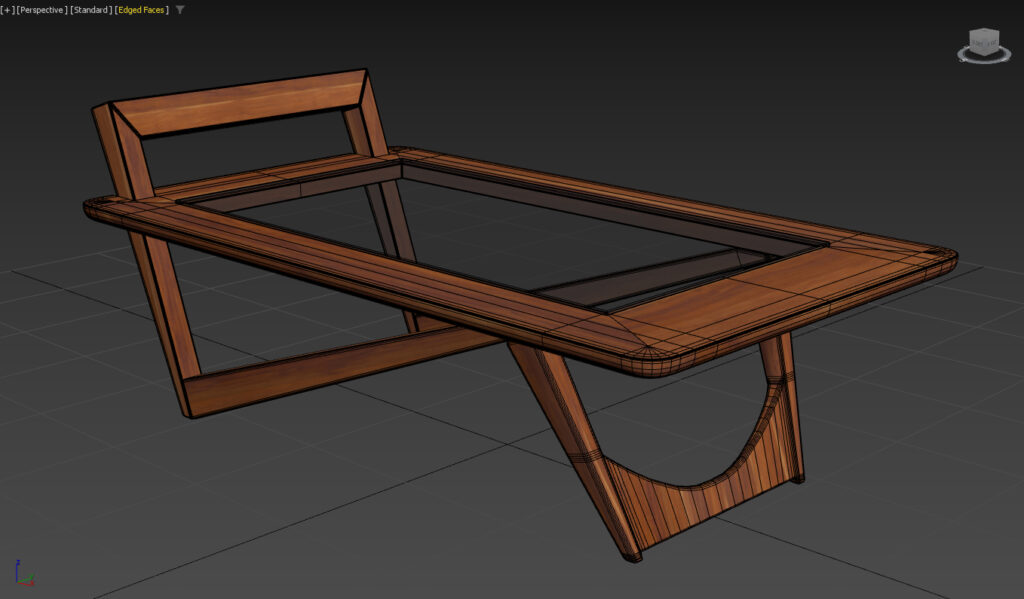

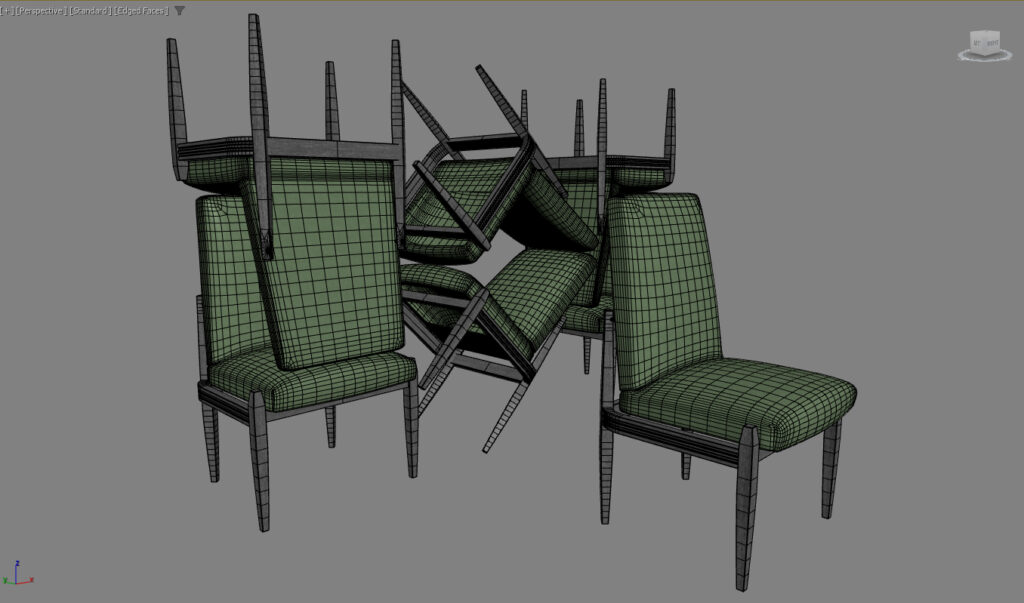

2. Texturing
The specialist takes his multifaceted draft object and applies textures to it. The edges are smoothed out. The design starts to look realistic. For example, it could look like this:


3. Lightning
To make it even more realistic, the designer places light sources next to the object. They create shadows and reflections on the object.
4. Rigging
Rigging is the process of creating a skeleton that can be used to manipulate parts of the model for further animation. For example, if we are talking about a character, rigging shows how he will move and in which direction he will sway while walking. One arm is worked through first, then the other, then the legs, the body itself, and other elements.
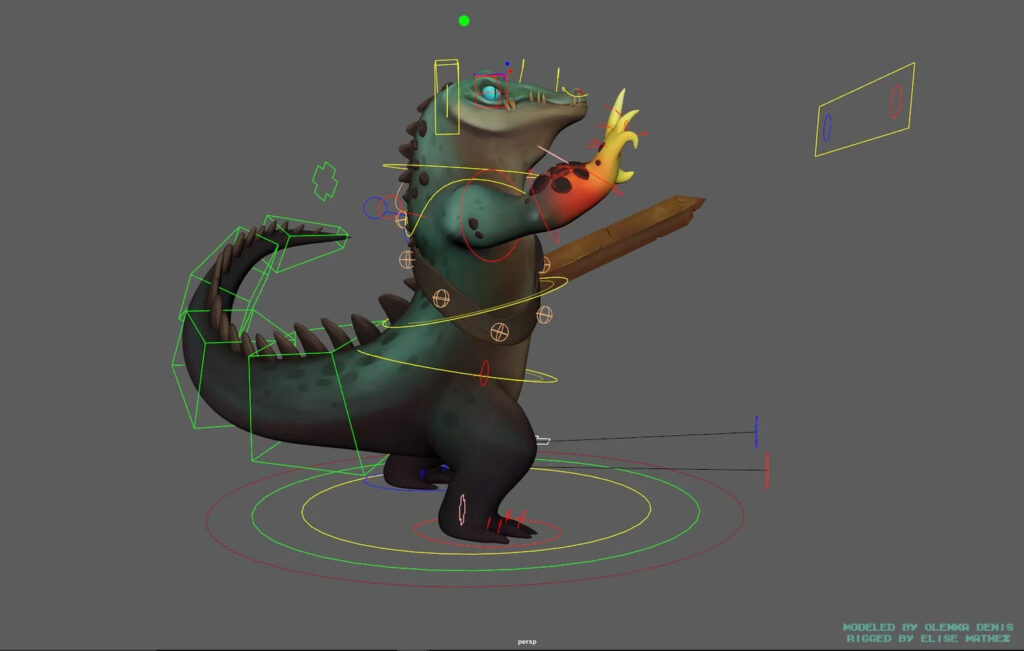
5. Composing
Composing is the creation of a complete image by combining several layers. This is the final step. The designer merges all the layers – with texture, shadows, and highlights – and gets a coherent CGI image.
How to make CGI animation?
Two more stages are added to the CGI animation process: animation and rendering. During the animation stage, artists “breathe life” into objects, animating them by adding movements. Then each scene is rendered to get the final visual result of the animation. You can also use specialized video editing software to add finishing touches, sound, special effects, and music to improve your CGI animation.
It seems that the creation of CGI graphics is straightforward, but it all depends on the complexity of the project – computer graphics can be created in a couple of months or several years. For example, 300 Spartans, a film in which every frame is computer-generated, was created by 16 studios over an entire year.
Creating CGI elements in the film industry
The element most commonly used by CGI in films is motion capture. This is a technique that involves capturing the three-dimensional movements of actors and storing them in the computer. It allows for more realistic and natural character movements that will later be created by the computer. This technique does not replace the work of the animator but makes it much more efficient and easier.
The use of motion capture requires specialized cameras, sensors, and markers. The actor wears a special suit to which sensors are attached. The cameras record his movements, and every time the actor moves, the information is sent to a computer where it can be processed. This technology also allows you to record an actor’s facial expressions, which makes it possible to transfer his performance to the resulting image.
Recently, motion capture has been commonly used in computer games that involve actors in their development, and in movies that feature distinctly anthropomorphic characters, such as Marvel.

What is the best CGI software?
Usually, CGI is created in several programs at once. In one program artists work out the dynamics, in another one, they apply special effects, in the third one they model objects, and in the fourth one they combine everything and get an animated scene. Here is the most popular 3D CGI software:
- After Effects. A program in which professionals create 3D characters, and run animation: rain, smoke, fire. Here you also can build models of objects in three dimensions and create visual effects.
- ZBrush. 3D graphics software. It’s used for drawing, modeling, and sculpting. For instance, to design the appearance of jewelry, cars, airplanes, toys, and computer game elements.
- Cinema 4D. Universal software for modeling 3D objects, designing effects, editing objects, and applying shadows, highlights, and textures.
- Maya Autodesk. A program for creating characters, working on special effects, and 3D animation. Autodesk’s Maya is used for combinatorial filming – when you first shoot a live person and then overlay overhead graphics.
- Blender. A free program used by animators, interior designers, and game designers. Supports VR rendering, PBR shaders, GPU and CPU rendering, HDR lighting.
What programs are used to create special effects?
It is simply impossible to list all the programs that are used by specialists to create CGI special effects. First of all, they are created, improved, and outdated every day. And secondly, there is a whole layer of both programs and whole CGI firms that specialize in a single special effect.
For example, when shooting Iron Man 3, Disney hired a company that did only CGI water effects. This company creates its programs and constantly expands its number depending on the task at hand. Moreover, few people remember that Pixar was created by Steve Jobs specifically as a CGI software company. The most famous now is RenderMan.
The most breakthrough in Computer-Generated Imagery in recent years has to do with the Unreal Engine program. It is a program designed for computer games. It draws computer graphics in real-time. The latest versions of this software produce a picture of such quality that if it is projected on a high-resolution screen behind the actor, no one would guess that the background is fake.
The good thing about this approach is that the CGI is created right on the set. Both the actor and director immediately see all the objects that will be in the frame. And that is exactly how it would look on the screen in the end. So there is no need to spend money on expensive video post-processing.
In addition, thanks to its gaming roots, this program can modify the picture in real-time. For example, simulating a change of weather, or the movement of a character. Among the famous modern uses of this program in the cinema is the Mandalorian.
CGI Examples
What is CGI? Even a lot of words may not be enough to answer this question. Real-life examples are what tell the story best. There are many famous examples of CGI used in movies, television, and other media. Here are some notable of them:
1.Jurassic Park (1993)
This Steven Spielberg film was groundbreaking in its use of Computer-Generated Imagery to bring the dinosaurs to life. The visual effects were so realistic that they revolutionized the industry and set a new standard for future films.
2. Titanic (1997)
A feature of this film is its realism. In trying to fully convey the history of Titanic, the director, and artists used computer graphics. It was mainly used to depict a sunken ship.
Interestingly, the technology is still used to make real-like CGI presentations to demonstrate in detail how the Titanic sank.
3. The Matrix (1999)
The film’s signature “bullet time” effect, where the camera appears to freeze time while the action continues, was achieved through a combination of practical effects and CGI. It is also well-known as one of the first films to be shot against a “green background”.
4. Star Wars Prequel Trilogy (1999-2005)
Each of us remembers the sensation this movie caused. And that’s because the share of computer graphics made it something completely unusual. In these films, computer graphics were widely used to create various creatures, environments, and spaceships. In particular, the character of Jar Jar Binks was completely created using computer graphics. At the time, it was something unique and took the audience’s breath away.
5. The Lord of the Rings Trilogy (2001-2003)
The epic fantasy series made extensive use of Computer-Generated Imagery to create various creatures, landscapes, and battle scenes. Weta Digital, a New Zealand-based visual effects company, won several Academy Awards for their work on films.
6. Marvel Cinematic Universe (2008-present)
Just a few years ago, we sat in movie theaters with real excitement, holding our breath for the incredible visuals of the last part of The Avengers. The films in the MCU make heavy use of CGI to create their superhero action scenes and fantastical worlds. Some standout examples include the battle scenes in Avengers: Endgame (2019) and the space settings of Guardians of the Galaxy (2014).
7. The Curious Case of Benjamin Button (2008)
This film used computer-generated effects to create the aging and de-aging effects of its lead character, played by Brad Pitt.
8. Avatar (2009)
According to director James Cameron, the movie is 60% computer-generated and 40% live-action. From the vivid landscapes and inhabitants of the planet Pandora to the appearance of many characters, everything was drawn and virtually animated. The 2009 Avatar film has long retained its status as the highest-grossing movie of all time. It was thanks to this movie that 3D cinemas began to be built on a massive scale around the world. This, in turn, pushed the development of computer graphics forward once again.
9. Avatar: The Way of Water
In December 2022, the long-awaited 2nd part of Avatar named Avatar: The Way of Water was released, which again impressed the audience with an incredible combination of different technologies, both computer graphics and physical special effects.
10. J’Adore Dior (2011)
An interesting example of the use of CGI technology in advertising is J’Adore Dior. In the 2011 J’Adore Dior commercial, images of Grace Kelly, Marilyn Monroe, Marlene Dietrich, and Ava Gardner were realistically added to the video using CGI.
11. Dove Chocolate (2014)
Another very impressive use of CGI in advertising was for Dove Chocolate in 2014. Dove hired Framestore, a visual effects studio, to work on CGI. It took more than a year of work to create the 60-second video.
12. The Lion King (2019)
The recent live-action remake of the beloved Disney animated classic was entirely created using Computer-Generated Imagery technology, resulting in stunningly realistic depictions of the film’s animal characters.
Mistakes in CGI creation
CGI provides amazing opportunities to create things that would be impossible without this technology. Thanks to it almost all ideas can be realized. When used intelligently, CGI can be breathtaking. Not without reason for a long time the most successful film in the history of cinema was Avatar by Steven Spielberg, which is largely based on computer effects.
Of course, CGI movies are not always as successful. Sometimes filmmakers rely too heavily on this technology or just do it carelessly, causing fan dissatisfaction and failed sales. An example of such a film is Green Lantern, which to this day is a source of jokes and ridicule because of the improper use of CGI effects.
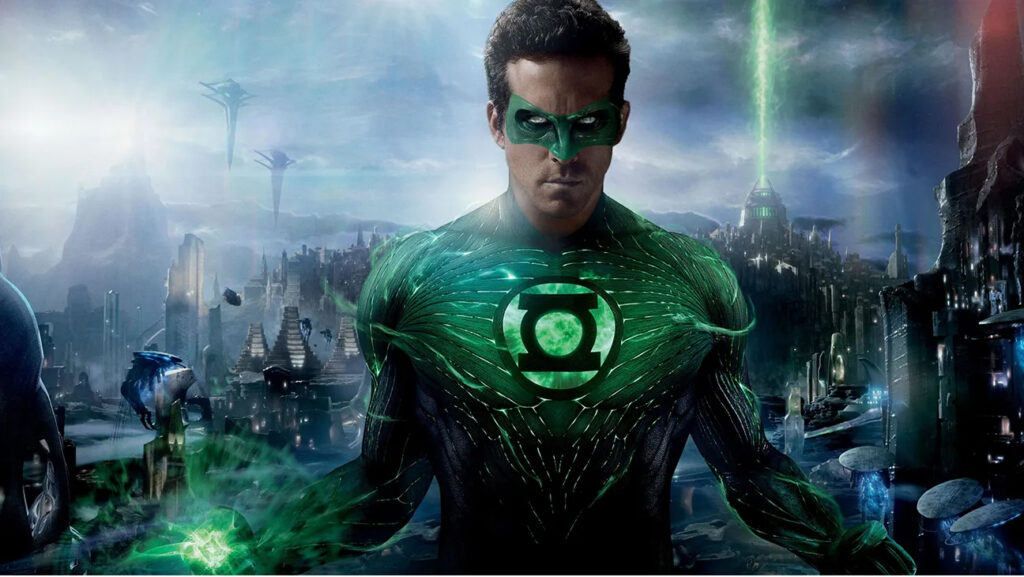
Attentive viewers love to review new movies in search of mistakes related to the use of computer graphics made by the creators of the picture. You’ve probably come across videos like this on YouTube with detailed analyses of the flaws. So, when the long-awaited House of the Dragon came out, the network began to spill out similar tweets:
That is why this complex technology requires a lot of effort from entire teams of creators. Here are some common mistakes which you should avoid when creating CGI:
- Lack of attention to detail: The process of CGI creation involves paying close attention to every detail, from the lighting and textures to the movement and interaction of objects. Neglecting any of these elements can result in a lack of realism or believability.
- Inaccurate physics: CGI relies heavily on physics simulations to create realistic movement and interaction of objects. If the physics is not accurate, the CGI images or animations can appear unnatural and unconvincing.
- Overreliance on automation: While automation tools can help streamline the CGI creation process, over-reliance on them can result in repetitive or formulaic output, that lacks creativity and originality.
- Poor character animation: CGI characters need to move and act in a way that appears natural and believable. Poor animation can make the characters appear robotic or lifeless.
- Ignoring performance considerations: CGI can be resource-intensive, requiring a significant amount of computing power and storage. Ignoring performance considerations can result in slow render times or poor-quality output.
- Lack of communication: The creation of CGI effects involves collaboration between multiple teams, including artists, animators, and programmers. Lack of communication between these teams can result in inconsistencies or mistakes in the final product.
CGI vs Animation
Finally, we’d like to answer one of the frequent questions that usually arise for those interested in CGI graphics. What is the difference between CGI and animation?
CGI (Computer-Generated Imagery) and animation are related but different terms in the field of computer graphics. Animation is a type of CGI, but not all CGI is animation. CGI includes any visual content created using computer software (it can be the compositing of multiple elements together, such as adding computer-generated backgrounds or non-existent objects to footage or enhancing practical effects with digital enhancements). Computer-generated imagery is also used to enhance existing scenes shot traditionally: adding fire, adding environmental elements, and coloring the landscape. It encompasses a wide range of techniques, including 3D modeling, photorealistic rendering, and composition. Animation, on the other hand, involves creating moving images (the illusion of movement) by manipulating static images or 3D models.
So, while animation is a specific type of CGI, CGI can encompass a wider range of digital visual effects techniques than just 3D animation.
Conclusion
Certainly, CGI occupies a special place in the modern world. Now it is almost impossible to imagine most areas of life without the use of this technology. However, for many people, this term is associated with a lot of questions. In this article, we tried to answer the most important and common ones: what is CGI, where is it used, and what is CGI meaning in movies? We also walked you through the history of CGI creation and the use of this technique. We have introduced you to the most high-profile examples of CGI used in the long history of cinema and television and together we have figured out what the future holds for this technology.
Have you ever used CGI technology in your work? What do you think about it? Share your opinion in the comments below.
